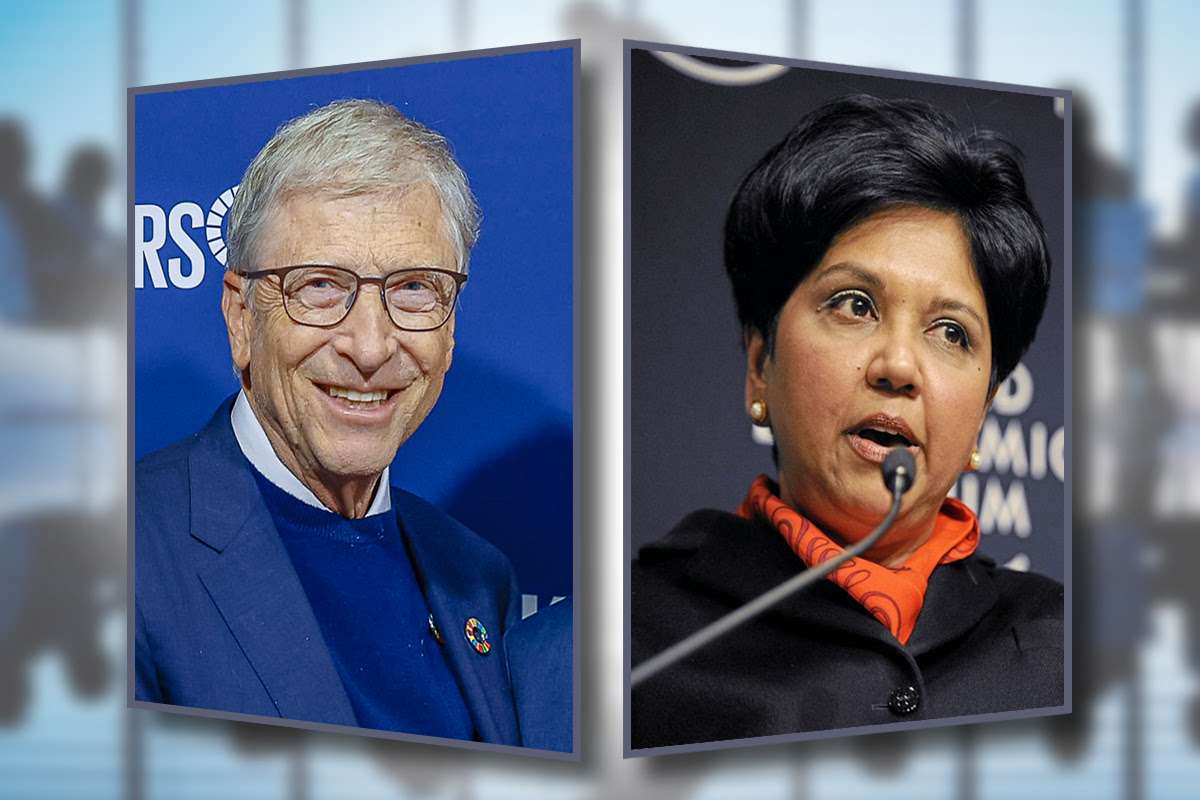Research Background at Ohio State
Ralph Stogdill and Carroll Shartle were the masterminds behind this fresh strategy for learning leadership. Instead of looking at personality traits, they focused on behaviors that everyone could relate to. Military and business organizations were excited about some strategies to improve their leadership skills.
The researchers came up with a great tool called the Leader Behavior Description Questionnaire. It was a survey that asked workers to rate how often their bosses displayed behaviors, all based on situations that anyone could relate to.

Through their research, the team found two main types of leadership behaviors. First, we have “Starting Structure,” which is all about organizing work and setting expectations. Then there’s “Consideration,” which means showing concern for employees and building trust. These two behaviors became the foundation of their work.
The post-war era was the perfect time to test out these ideas. Military units and factories were lining up to participate in the studies because they wanted to improve their leadership skills as America entered a period of fast economic growth.
What’s interesting about these studies is that they completely changed the way we think about leadership. It’s worth mentioning that previously, researchers focused on trying to find the perfect personality traits for leaders. The Ohio State team demonstrated that leadership centers on people’s actions and behaviors – it’s a message that still resonates.
Of course, the research team had some challenges along the way. They had to convince organizations to participate and create surveys that workers could follow. They also had to process data without the help of modern computers. But that’s all part of the research process.
The area at Ohio State University during this time was electric. Research funding was flowing freely as America looked to make the most of the post-war era. This support allowed the team to create studies across organizations, leaving long-term results in the field of leadership.
This story of the Ohio State Leadership Studies remains a big chapter in the history of leadership research, and their work continues to shape us.
Structure and Consideration
A memorable boss who got things done but still made you feel appreciated left a long-term impression, and there’s a reason why they excelled at their job. The Ohio State Leadership Studies took a deep look to tell you about what shapes a good leader – and they found some interesting things.
First off, leaders like to have two main ways of behaving. There’s “starting structure,” which is all about getting the job done. If your boss was always on top of deadlines, had a clear plan of action and made sure everyone knew what they needed they were probably good at the whole starting structure thing.
The other side of the coin is “consideration” – where the relationship-building comes in. If your boss took the time to listen to your ideas, showed they cared about your wellbeing, and remembered little things like your birthday or when you were having a tough day, they were mastering the consideration detail.

Some people believe they have to choose one or the other – either focusing heavily on work or heavily on people. But the Ohio State studies have shown that the strongest leaders excel in both areas at the same time.
Leaders who are great at starting structure and consideration look exceptional to others. Some leaders are born organizers but have a hard time connecting with their team on a personal level. Others excel at relationship-building but have some problems keeping projects on track. That perfect balance is what separates the exceptional leaders from the average ones.
The cool thing about this is that leadership isn’t some innate talent you’re born with. It’s a set of behaviors that anyone can learn and develop over time. This was encouraging in terms of how we at HRDQ-U can plan leadership development. Instead of focusing on personality traits, we can now look at actions that leaders can practice and master.
When you’re able to help with a tough project while still maintaining strong relationships with your team, it makes a big difference in creating a productive, motivated, and supported workforce.
Independent but Similar Behaviors
Consideration is about the human side of things. Leaders who are great here take the time to get to know the people on their team. They’re always ready to lend an ear when someone has a problem, and they make sure their team knows they’re available. They point out when someone’s doing good work, and they care about helping their employees grow and develop.
Leaders can combine and match these behaviors in different ways. A person could be a master at organizing work but have a hard time connecting with their team on a personal level. Some leaders do their best at building strong relationships, but they can drop the ball with giving clear direction and structure.
The best leaders know how to strike a balance. They can switch between focusing on the job and focusing on their people, depending on what the situation calls for. They could be strict about hitting deadlines but they also know when to cut their team some slack if someone’s going through a tough time.

When you take either behavior too far, it can create some problems. Leaders who are all about structure might end up micromanaging and stressing out their teams. Being too focused on consideration could make someone afraid of having tough conversations and let performance start to slide.
Most leaders don’t fit well into just one of these categories. Sometimes they naturally like one style. But they can learn to develop skills in the other.
A manager might start out being job-focused but learn how to build stronger relationships over time. Others might need to tighten up and get more structured after being too casual with their leadership style.
At the end of the day, success comes when leaders learn about when to step up and take charge and when to take a step back and give support. Your team needs you to set clear expectations. But they also need to know that you have their back!
How It Affects Modern Leadership
Let’s tell you about how the Ohio State Leadership Studies completely changed the way we think about leadership – and why it still resonates.
Back in the day, everyone used to think that leaders were just born that way. Like it was some kind of talent that you either had or you didn’t. But these studies showed us that leadership is all about behaviors – things that anyone can pick up and learn.
The research team found two main things that successful leaders do. First off they create structure. They set clear goals for their team and make sure everyone’s work is organized and on track. But secondly they show consideration for their team members. They care about them as people and put effort into building strong relationships.
This was a big deal because it meant that we could actually teach people how to become better leaders. Instead of just trying to find people who seemed like they were born to lead, businesses could start building leadership skills in their employees. With some training and practice, most people can develop their ability to lead others.

These studies also gave us some tools that we still use. Like the Leader Behavior Description Questionnaire, it helps organizations measure leadership skills and find areas for growth. Modern businesses use updated versions of these same tools to develop their managers and executives.
The findings from the Ohio State studies ended up shaping newer leadership theories too. When you hear people talk about ideas like transformational leadership or situational leadership, you’re seeing the results of this research. They showed us that leadership strategies can vary based on the situation – different circumstances call for different leadership styles.
The workplace looks pretty different from how things were when these studies were done. But the core ideas still hold up well. Modern leaders still need to balance getting things done with taking care of their people. And with so many teams working remotely now, learning about when and how to strike that balance matters more than ever.
At the end of the day, this research changed how businesses go about building their leaders. Managers learn how to set clear expectations for their team and how to build strong relationships with the people they lead.
Examples of Successful Leaders
Let’s get started at what shapes a good leader through a couple of examples that can give you some ideas.
Bill Gates is someone who knew how to balance structure and personal consideration when he was leading Microsoft. He had a direct way of communicating that made even the toughest ideas clear to follow. And he pushed his employees to meet high standards. But he also made sure to give them the support they needed to get there.
Another great example is Indra Nooyi, who used to be the CEO of PepsiCo. She did something great – she would write personal letters to the parents of her senior executives. She always made a point to bring in different perspectives when she had to make big decisions for the company.

When you work for leaders like Gates or Nooyi, it was hard and inspiring at the same time. Their employees always knew what was expected of them and felt connected to the organization. Gates encouraged people to be innovative and think creatively, all while keeping everyone headed in a clear direction. And Nooyi made sure people felt valued, even as she pushed the company towards ambitious goals.
These leaders show that structure and consideration create a powerful combination. Their teams knew their roles and felt supported in their work – this helped create strong and trusting relationships throughout the whole organization. People felt comfortable taking risks and suggesting new ideas, because they knew their leaders had their backs.
The success of Gates and Nooyi shows why balancing structure with personal consideration matters. Their employees stayed motivated because they knew their work mattered, and they worked harder because they felt valued as people. These leaders created environments where the company and its people could grow together.
At the end of the day, this leadership strategy works because it takes care of practical and emotional needs. When you have clear expectations, it helps people understand their goals and responsibilities. When you show personal consideration, it makes people feel supported and valued. Put those two things together, and you will have a workplace where people are excited to give their best effort, day in and day out!
Some Similar Theories and Comparisons
So, the Ohio State Leadership Studies weren’t the only ones trying to find out what makes a great leader back then. Other researchers were also on the case too. They had a similar strategy. But they ended up with some different ideas at the end of the day.
The Ohio State researchers thought there were two separate ways to lead that you could combine and match. But the Michigan researchers saw it as a sliding scale – you were either all about the job or all about the employees. No in-between!
These studies were a big part of the ball rolling on leadership research. The progress continued steadily from there. Later on, theories like Situational Leadership came along and said that leaders need to be able to switch things up depending on the situation.
Transformational Leadership Theory took a different approach. Instead of looking at what leaders do day-to-day, it focused on how they inspire their teams to shoot for bigger and better things. It stands apart from the Ohio State studies, which were all about behaviors.

The thing is, workplaces are way tougher than they were back in the 1940s when the Ohio State studies happened. They might use the structured strategy from the Ohio State studies for schedule tasks. But then switch gears to Transformational Leadership when it’s time to shake things up.
Each of these theories can bring something to the table. The Ohio State studies help us see the basics of leadership behavior – while Situational Leadership reminds us to be flexible. and Transformational Leadership shows us how to inspire big changes and rally the troops!
Different workplaces might need different leadership styles, too. A factory floor might work well with the clear structure that the Ohio State studies emphasized. A tech startup might need more of the inspiration and flexibility that newer theories recommend.
At the end of the day, the change of leadership theory goes hand-in-hand with our view of human behavior. We’ve moved from simple, behavior-based models to more nuanced approaches that consider the challenges of leadership. It’s not a one-size-fits-all deal anymore. That’s a big deal!
Leadership Through Action
Think about leaders who’ve made a difference in your life – they were likely skilled at explaining what needed to be done while also taking the time to listen to you and give you support. It’s that balance between giving structure and making a personal connection that can make a difference.
Modern studies from years ago continue to yield results. The idea that leadership is more about what you do rather than who you are might feel simple, but it’s not. It means that everyone has the potential to develop into a stronger leader. Setting clear goals, building relationships, and supporting your team are all skills you can improve with practice.

HRDQ-U is a place to start building your leadership skills. We have a learning community with webinars, podcasts, and blogs that can give you some input as you grow. Our webinar, A New Approach to Coaching Leaders in a Volatile, Uncertain, Chaotic, and Ambiguous World, is a relevant one that you won’t want to miss.
And if you want to learn how different personalities affect leadership and teamwork, the What’s My Style assessment can give you some ideas to help strengthen your relationships and improve your team’s productivity.

































